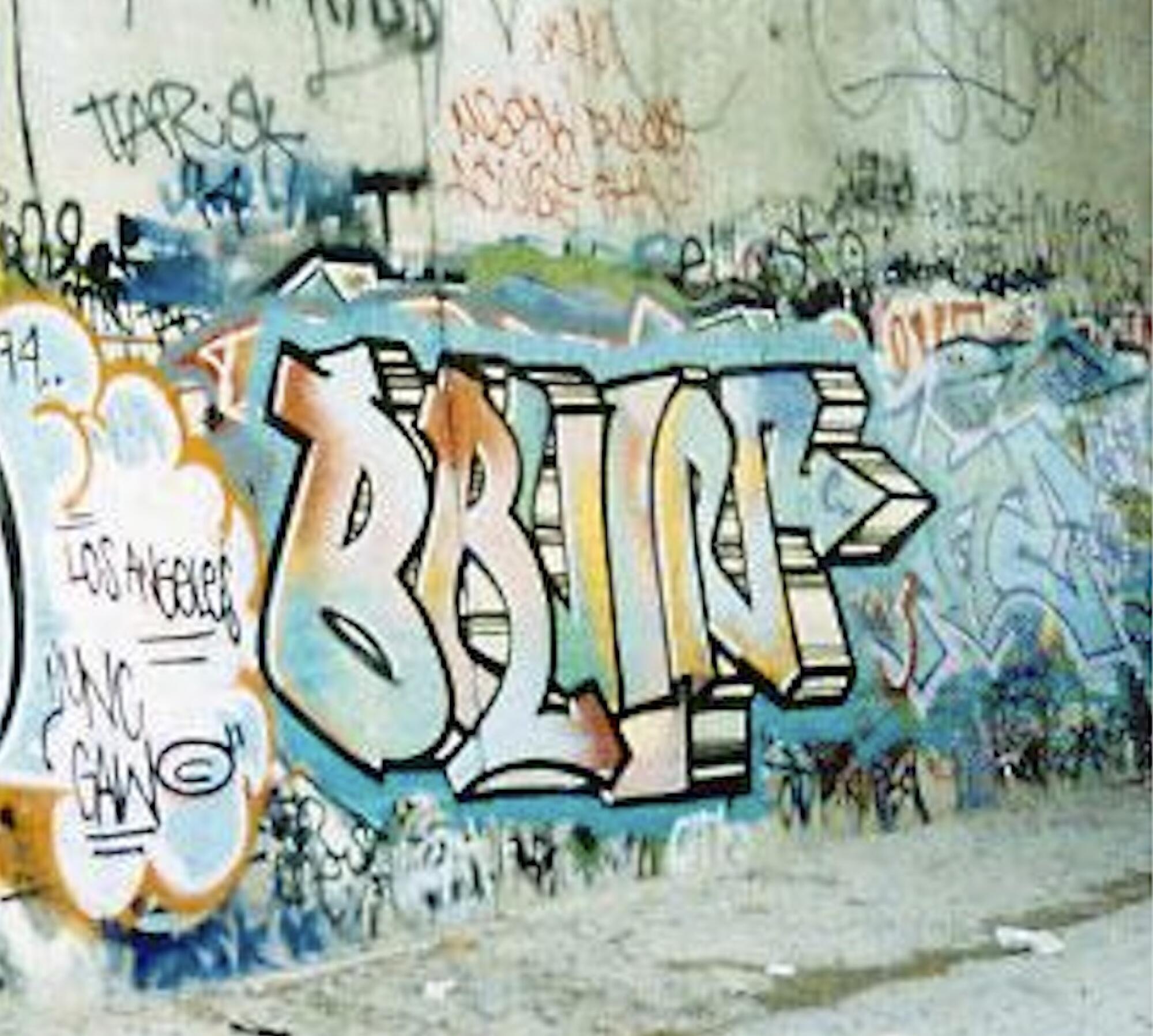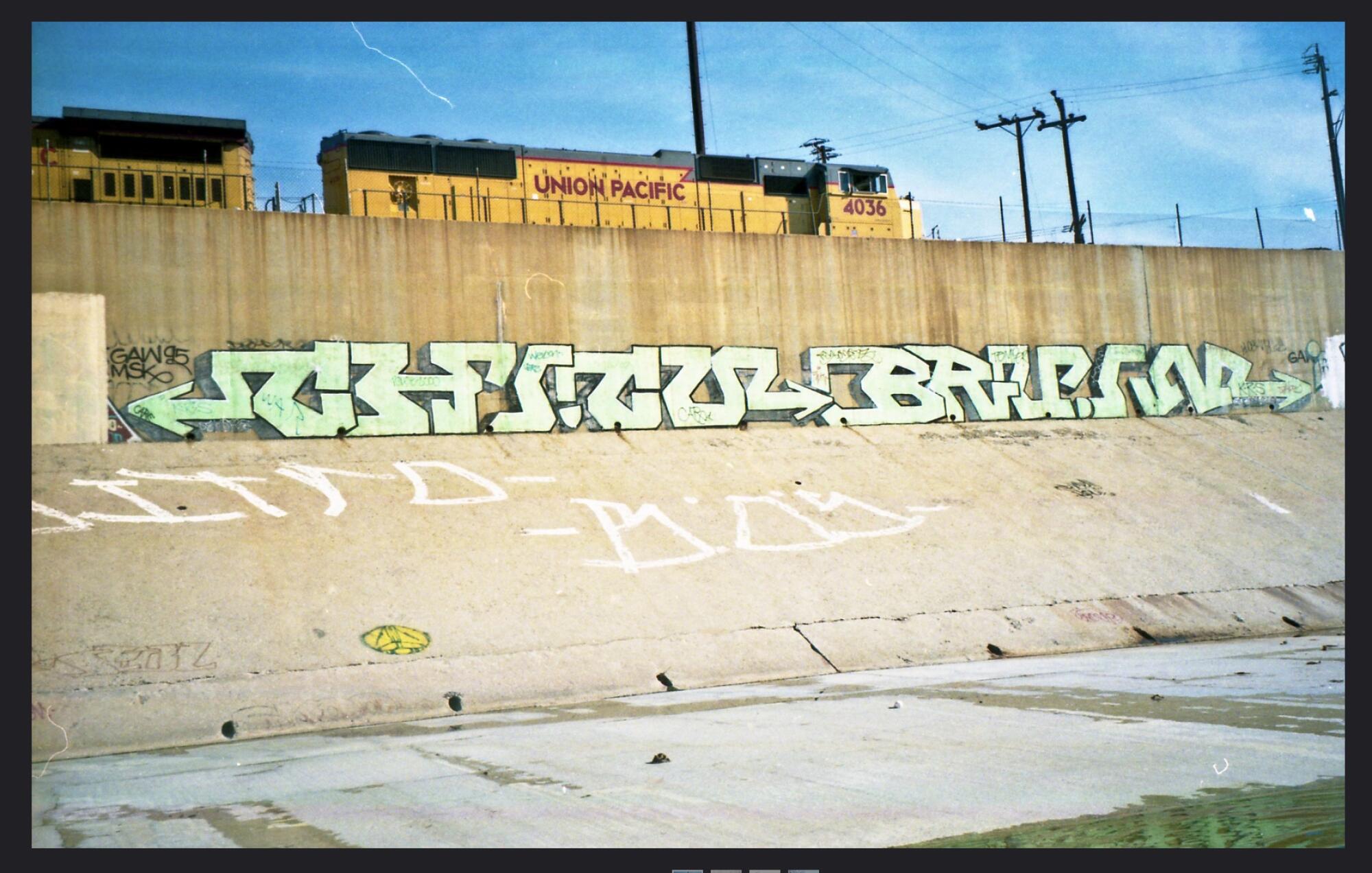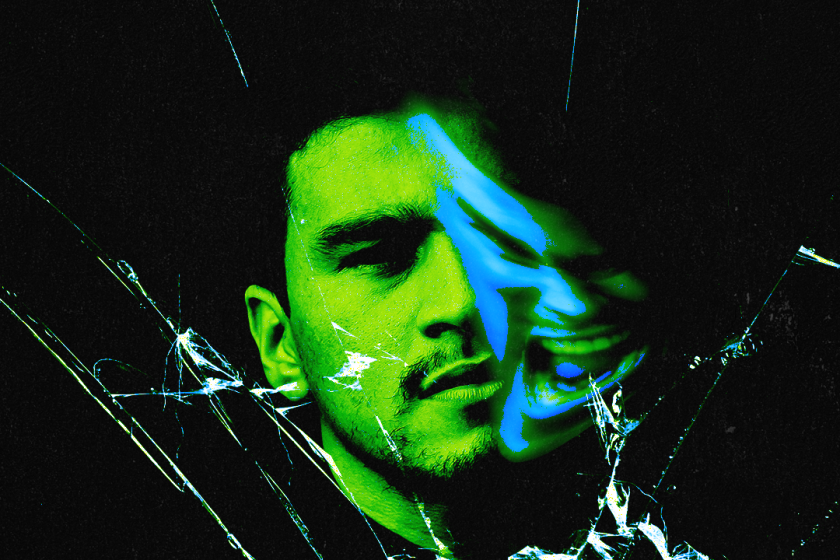
- Share via
It’s been over 40 years since my introduction to hip-hop. We were born on opposite ends of the country, but the instant connection I had to this art form is a testament to the genre’s transcendent appeal and enduring power.
Of the five elements that comprise the culture — rapping, beatboxing, spinning turntables, breakdancing and graffiti — it is the latter that not only shaped my identity and brought me recognition on the streets of L.A., but in all likelihood also saved my life.
Latinidad can be expressed in multiple ways, and these Latinx entrepreneurs are using their nail art businesses to showcase their culture.
My personal healing journey started when I first held a spray paint can in my hand.
It was my older cousin Ruben “Pride” Moreno, a graffiti artist and DJ who introduced me to painting as a form of self-expression. He showed me that a world outside of gang culture existed.

Pride was immersed in L.A.’s hip-hop scene since its first waves brought breakdancing, DJing, rap and graffiti to the West Coast in the mid-’80s.
Known in L.A. hip-hop circles for his artwork and as a DJ for local popular acts, Pride was the only person in my family who had gained recognition and status outside of gang-banging or selling drugs. As a DJ, he made an appearance on “The Gong Show,” masterfully scratching his turntables for the delight of both the studio and television audience.
For me, Pride represented exactly what his name signified, a proud identity earned through creativity and dedication, not destruction, a rarity in my life as a 12-year-old versed in the trappings of the Florence District of South-Central L.A.

My peers were already carrying guns and dying to make names for themselves in the streets.
At the time, thanks to Pride, I proudly carried milk crates full of vinyl records for him to neighborhood parties.
In 1991, when I was on the cusp of becoming a teenager and first picked up a Krylon can, there were 2,589 homicides in Los Angeles County.
In barrios and hoods like mine, boys weren’t considered real men worthy of respect until they shot someone or did jail time.
‘Machismo’ a word that’s been used to bring a variety of behaviors and attitudes under one roof. It’s worthwhile to revisit the concept and see if it can help explain the social ills plaguing the Latino community.
My older brother made a name for himself after joining one of the oldest and biggest gangs in Los Angeles County. Were it not for Pride looking out for me, I doubt I would have had the strength to resist the temptation to follow in my brother’s footsteps.
Seeing me struggling to carve out my own identity, Pride gave me a name with which to leave my mark, one that was synonymous with the city. One based on my love of the UCLA basketball team — Bruin, the team’s official mascot.

Now, more than 30 years later, and far removed from my graffiti days, my closest friends and family still refer to me as Bruin.
After embracing my new moniker, the only people outside of my family who called me “Salomon” were my teachers who had no idea I spent my nights bombing “Bruin” at graffiti yards like the Belmont Tunnel or on freeway overpasses.
The Belmont Tunnel was the center of gravity for L.A.’s graffiti culture in the ’80s and ’90s. Now closed, the tunnel served as an informal open-air gallery and community center for graffiti artists from all over the city.
There, the cops pretty much left us alone to hone our skills.
It was at the Belmont Tunnel and similar yards throughout the city that I regularly found myself among an eclectic tribe of fellow teenagers, seeking refuge from the pervasive violence of L.A.’s gang culture.

In our world of graffiti, the unifying power of creative expression and mutual respect subverted the strict divisions that defined L.A. along rigid color and territorial lines — white, Black, brown, blue and red, east, west, downtown and South-Central.
The friendships I developed within that group of graffiti artists are among my longest-standing and most cherished.
Beyond the Belmont Tunnel, it was a precarious existence fraught with danger on all sides. The cops treated graffiti writers as criminals, targeting us for low-risk arrests while the gangs suspected us of being either rivals or of disrespecting their hoods with our tags.
We worked mostly at night and wore dark clothes and running shoes to evade the cops. When gang members approached us, we often gave them a spray can as a show of respect and convinced an impressive number of them to show off their artistic skills with barrio placazos in the Chicano calligraphy style.
Fans with red blazers, ties and half-buttoned white dress shirts shuffled into the BMO Stadium to experience the reunification of beloved Mexican telenovela pop group RBD.
New York inspired us and stoked our artistically competitive fires.
Over time, our scene developed distinctive styles and aesthetics of its own, heavily influenced by Chicano culture and West Coast sensibilities.
L.A. graf writers like Skill, Wisk, Chico, Gin, Duce, Sleez, Oiler, Cab, Gkae and Tempt began to appear in underground graf zines and received praise in cities around the world, including Berlin, Tokyo, São Paolo and Mexico City.
These were my contemporaries, my friends and my rivals. We pushed each other to innovate. All the while, we formulated unique personal signatures that marked our presence in the world.
But it was the artists who have not received the recognition they deserve, who opened my eyes to the subtler textures and dimensions of life.
Break dancing was created in the Bronx by Black and Puerto Rican youth during the 1980s and has since expanded to the world.
Graffiti artists like Just 195, a Japanese American Rastafarian, who awakened me to “consciousness” and inspired me to explore vegetarianism. Petal, my homegirl, a daughter of the Armenian diaspora, who turned me on to the sexism and misogyny not only in our graffiti world but also in myself.
These fellow hip-hop heads, my first non-Black or Latino friends, were enduring lifelines that kept me from drowning in the violence and abuse that surrounded me.
Salomon Zavala is a human and civil rights attorney, the founder and managing attorney of Zavala Law Group and the executive director of Ollin Law. This piece is adapted from a memoir he is currently writing. @Salomon_Zavala
More to Read
The Latinx experience chronicled
Get the Latinx Files newsletter for stories that capture the multitudes within our communities.
You may occasionally receive promotional content from the Los Angeles Times.










